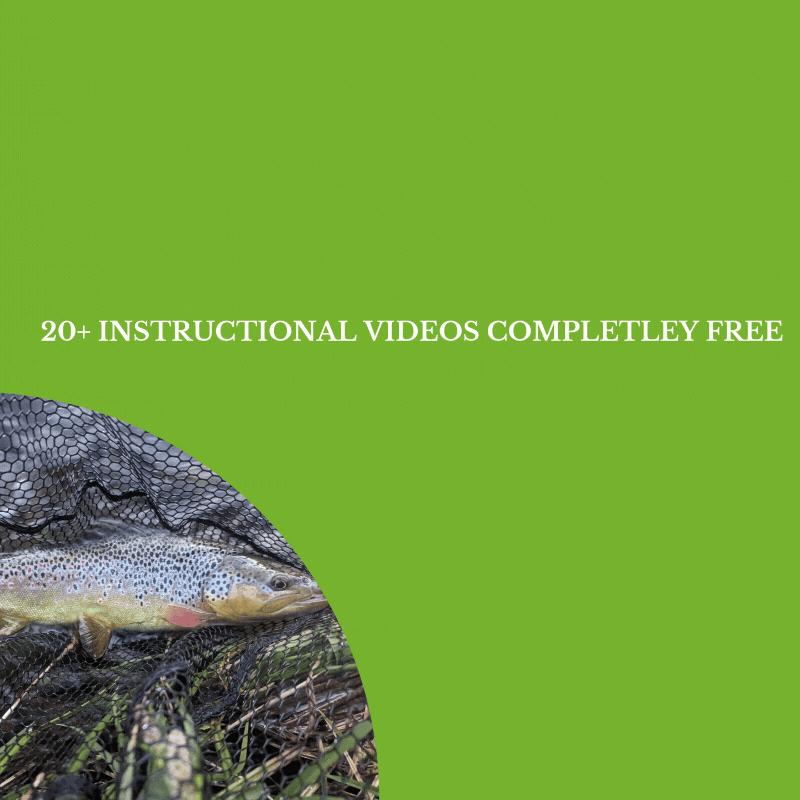

Among the most enduring techniques in British river fishing, upstream spider fishing stands out for its subtlety and effectiveness. Unlike the more familiar down-and-across swing of soft-hackled wets, casting spiders upstream demands precision, patience, and a deep understanding of trout behaviour.
What Is Upstream Spider Fishing?
The method is simple in outline: cast a pair of spider patterns—one on the point and one on a short dropper—directly upstream or at a slight angle, allowing them to drift naturally back toward you. The flies ride just under the surface film, imitating nymphs or drowned insects struggling in the current. Takes are often gentle plucks, sometimes no more than a hesitation in the line. Detecting them requires concentration and practice—many anglers confess that it took years before they felt truly confident.
Why Fish Spiders Upstream?
Trout and grayling feed the majority of the time below the surface. By fishing spiders upstream, you present your flies before the fish has seen your leader or line, giving the impression of a natural insect drifting with the current. This is particularly valuable in clear rivers where fish can be wary. Unlike a swung wet fly, which moves across the trout’s window, an upstream spider drifts directly into it, often bringing more confident takes.
Patterns to Use
North Country spiders are the classics here—slim, sparsely dressed flies with soft hackles that pulse in the current. Patterns such as the Partridge & Orange, Waterhen Bloa, or Snipe & Purple remain as deadly today as they were two centuries ago. Their beauty lies in suggestion rather than imitation; they can stand in for olives, midges, or drowned terrestrials depending on conditions.
When to Try It
Early in the season, spiders fished upstream are a fine choice during hatches of Large Dark Olives or March Browns. In summer, they imitate drowned midges or terrestrials knocked onto the water. Come autumn, with Iron Blues and Pale Wateries about, upstream spider fishing comes into its own again—particularly for grayling, which take soft-hackled patterns with gusto.
Tackle and Presentation
A 9–10ft rod (usually in #3,#4 or #5 weight) with a fine leader tapering to 3.5lb or less allows delicate presentation and good line control. Two flies—one on the point and one on a short dropper—are usually the most effective setup for this method.
This is very much a short-range technique, often fished with no more than a rod length of fly line outside the tip. As the flies drift back, the lift of the rod is used to control the pick-up of slack line, keeping you in touch without dragging the flies unnaturally. Cast short, stay close to your flies, and let the current bring them downstream under tension that is light but connected.
The best water types to target are fast riffles, pocket water, or streamy runs with a broken surface. These areas not only provide excellent cover for the angler but also concentrate feeding fish looking for drifting nymphs and drowned insects.
Detecting the Take
Takes when fishing spiders upstream are often subtle. Unlike the sharp tug of a swung wet fly, you may only see a slight check of the line or feel the faintest resistance. A great aid is to grease the last two feet of your fly line and the first 10 inches of leader—this allows you to watch for the tiniest pauses or twitches as your flies drift back.
Another golden rule: always strike at the end of every drift regardless of whether you’ve seen a take. You’ll be surprised at how many trout and grayling you connect with this way—fish often intercept the fly at the last moment, and a gentle lift of the rod will turn missed chances into hooked fish.
The Pleasure of the Method
Upstream spider fishing is not about forcing results. It is about entering into rhythm with the river—observing hatches, making measured casts, and enjoying the moment a trout sips in a soft-hackled fly. Success often comes not through covering great distances, but by fishing a short stretch thoroughly and attentively.

